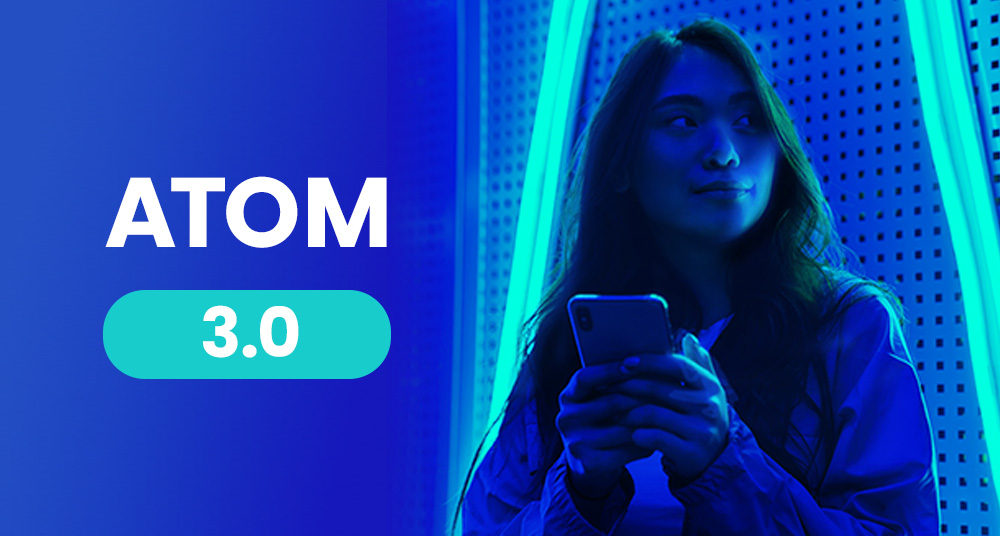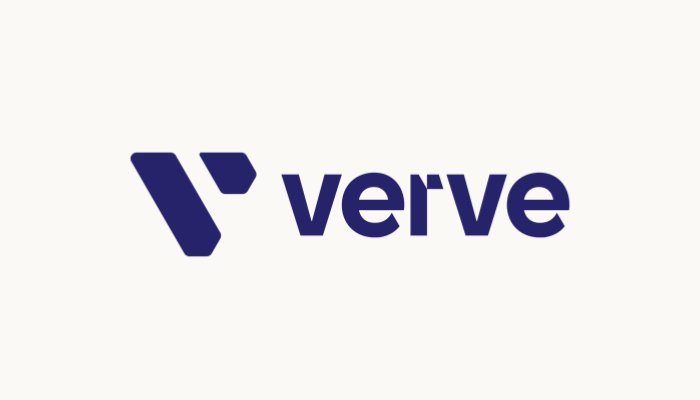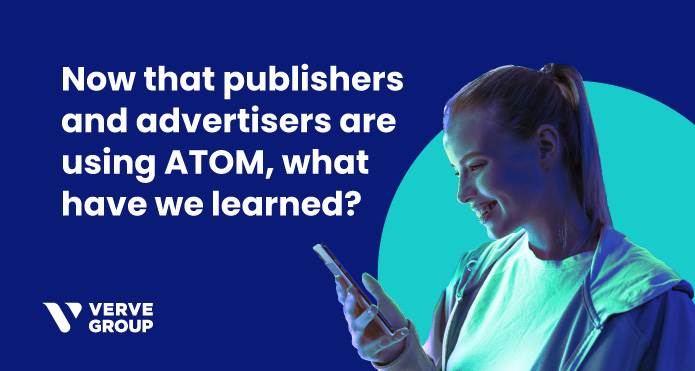Inside look at ATOM 3.0 and the shift toward ID-free mobile targeting

The loss of signals The internet is now divided into two categories of users: authenticated and anonymized (unauthenticated). Authenticated users allow access to identifiers (IDs) or personally identifiable information (PII) — given relevant consent permissions are obtained from the user. Meanwhile, unauthenticated users demand anonymity and privacy from personalized advertising. Reality check: ID-less is the default. For example, we see on our marketplace that only 30% of the iOS user base is authenticated traffic; unauthenticated iOS devices account for 70%. While Android devices are still available with GAID, this is bound to change in the next few years as Google continues its efforts toward a more privacy-focused targeting infrastructure with key partners, including Verve. While the internet user base is split into two, the ID-free solutions landscape is more fragmented than ever, leaving buyers and sellers with multiple technologies to test and validate. That said, not all solutions are equally future-proof. Popular alternatives like third-party IDs/Universal IDs rely on user consent or authentication — so they only address the smaller pool of users who agree to the silent value exchange of their time, attention, and identity in return for free content. Predictably, an overwhelming majority of advertisers and publishers are increasingly testing and gravitating towards contextual solutions that are 100% ID and PII-free. Verve’s investments in Anonymized Targeting on Mobile, or ATOM, are in this realm; more specifically, cohort-based targeting and monetization. Since ATOM’s launch in 2021, we have doubled down on our investment in machine learning models, working closely with demand partners to understand cohort requirements specifically for performance use cases, and establishing validation framework to improve cohort efficacy. Today in 2024, we’re rolling out a new evolution: ATOM 3.0. Below, we unpack how ATOM 3.0’s on-device cohorts are radically changing the game for mobile targeting and monetization. What is ATOM 3.0? ATOM 3.0 is an on-device cohort targeting and monetization technology for mobile marketers. It’s a privacy-centric approach to targeting and monetization, built for a world without IDs. ATOM 3.0 uses machine learning/computing models to process device signals and real-world context of users to predict user traits and classify them into cohorts. It uses no IDs/PIIs, and all data processing and storage happens securely within the user’s device. ATOM 3.0 offers more predictability to our buyers in identifying users and understanding user traits that help place better bids in the absence of IDs. Publishers, as a result, stand to gain from improved bid rates and higher eCPMs (compared to the IDFA-less eCPMs today). But how does ATOM 3.0 achieve these benefits for publishers and buyers? Does it have scale? ATOM 3.0 is now bundled with the HyBid SDK 3.0. This integrated model means our publisher partners can pick up the regular ad SDK with the ATOM module to monetize their ID-less users. Absolutely no integration hassles! (Added bonus: it’s free to use ATOM 3.0 within the SDK.) Verve operates one of the largest in-app marketplaces globally, meaning access to over 1.5B users across 10K+ publishers. For buyers, this provides a scaled solution compared to the challenges they face with alternate ID-based audiences like third-party/Universal IDs that have no meaningful reach or scale within mobile apps. What targeting is available? ATOM 3.0 now supports 30+ cohorts, over 10 key cohort categories including sought-after segments like demographic, interest, mobility — in addition to new segments that are key to performance buyers like engagement, playtime, and attention. Click to enlarge Is it precise? The precision of cohorts is a function of the degree of confidence by which we could ascertain whether a certain cohort is what it claims to be. For example, how do we determine with confidence if a user identified under the cohort “Gen Z Female Gamer” is necessarily the person they are identified as? This is precisely where trained cohort computing models prove its worth. ATOM 3.0 uses the freshest signals (device, app, or activity) that reflect what’s happening at the moment, every time a user opens an app. Due to the nature of how cohorts are built on the device runtime, the cohorts are recalculated every time the user runs the app. This ensures cohort relevancy at the time of the ad request. Case in point Take the example of a very specific cohort like “Female Gaming Enthusiasts with High Attention and at Home.” We can process and observe signals (like gesture patterns, session count/depth, daily usage time, battery charge, reachability, screen brightness, to name a few variables) to arrive at a degree of confidence with which we could ascertain that the user falls under the described cohort. These signals and variables are observed over a period of time to fine-tune cohort information. Further, the cohorts are validated with seed data, against deterministic identifiers (where known), our O&O data apps, to name a few. How is performance improved? Better bid decisioning via incremental signals For performance buyers, ATOM 3.0 provides incremental signals over and above the contextual intelligence that you receive through the bidstream. While contextual signals (like app bundle ID or other metadata information) point to a user’s moment of intent in a particular point in time, it may not provide a sufficient picture of the user behavior. An ATOM cohort is a combination of many such moments observed over a period of user activity that helps paint a better picture of a user’s behavior. Think of context as a single slice of an entire pie; the pie being a cohort. ATOM 3.0 can provide additional information that strengthens the bid request and allows DSPs to make a better bidding decision (on top of the contextual signals). Incremental user information for targeting Additionally, ATOM 3.0 provides incremental cohort information (i.e., groups of user profiles) that allows bidders to understand with better degree of confidence on what type of users they are seeing in the case of ID-less requests. Recreating lost audience segments With the loss of IDs, brand buyers have restricted visibility into key audience segments like demographic or interest, that were the…
Verve’s ATOM 3.0 brings ID-less, on-device behavioral targeting to 10,000+ apps

Press release: ATOM 3.0 is an industry-first, on-device targeting solution for iOS that gives mobile marketers the ability to meaningfully predict the traits of anonymous users in a privacy compliant manner. This offers a significant competitive advantage in an ecosystem where 75 percent of iOS users opt out of tracking, with a similar trend predicted on Android.
Now that publishers and advertisers are using ATOM, what have we learned — and what lies ahead?

In 2021, Verve launched Anonymized Targeting on Mobile — ATOM. In response to GDPR and Apple’s new privacy strategy on iOS, ATOM was designed with the intent of providing a mobile-first advertising solution focused on machine-modeled behavioral and first-party contextual data. With ATOM, publishers can continue to show relevant ads to their users and offer advertisers to accurately reach their target audiences without IDFA. Now that ATOM has moved on from being our baby to being an ad-tech toddler, we have already recognized several accomplishments, milestones, perspectives and learnings. Mindsets are changing While Google recently announced (again) that cookies won’t crumble just yet, ATOM has proven to publishers and advertisers, alike, the necessity to adapt to a world without identifiers. Consumers have more control, choosing what kind of data is collected and for which purposes–not only under GDPR standards, but if they use an iOS device, for global standardization. Not using IDs for addressing the right audiences is now considered common practice by most advertisers. This is necessary, as 72% of iOS traffic hitting Verve’s mobile ad exchange is currently sent without an ID. Budgets are shifting While acceptance and adoption of ID-less solutions has surged, some brands have chosen the “easy route” by shifting budgets to Android. By nature, brands operating in verticals like automotive with little access to their own first-party data will rely on third parties to fill that gap (see our Media Planner’s Strategy Guide for more details). However, chasing IDs is not going to last in the long run, and most brands might not even need targeting granularity down to a specific user. Yet, maintaining addressability remains key. And alternative solutions that offer solutions at scale for segment- or cohort-based targeting such as ATOM will deliver the same — if not better — results for brand campaigns. In addition to that, these new approaches also offer improvements to other factors such as taking into consideration the environments in which brands place their ads, as well. Brand safety is a big concern with modern day marketing — one which Verve’s Moments.AI™ tackles by identifying threats and qualifying content in real time. Performance measurement is calling Now that advertisers have adopted alternative targeting strategies, voices for measurement and attribution without IDs are becoming louder. How can ad performance be measured without identifiers? There are a variety of ID-less measurement options to consider. – Media Mix Modeling Media mix modeling is a statistical method based on an extensive set of historical data. This method is great for forecasting, but has its weakness when it comes to measuring the impact of advertising for a product launch when no historical data has been recorded. To inform media mix modeling, campaigns are often turned off entirely to arrive at a baseline for measurement. However, this practice of turning off any marketing activity entirely is often not feasible for advertisers. – Incrementality Incrementality studies can range from “simple” A/B testing to testing by geography (e.g., promoting a product launch in one region while letting it run by itself in another). These options, however, become complex when many different messages are being tested in parallel.Marketing impact can also be measured without identifiers in consumer surveys or panels. This method can grant insights into consumer demographics, share of voice, purchase intent, and more. However, results rely on active survey or panel participation. An automated algorithmic based approach to incrementality is casual inference. By adding all possible factors to the equation, these models can granularly analyze which marketing activity leads to an increase in conversion results, and which marketing practice might lead to cannibalization. – Cohort-based measurement. Cohort-based measurement finds its application with solutions such as data clean rooms or contextual advertising. While data-clean rooms bundle different advertisers’ and publishers’ user data within a black box, any participant can easily send queries to retrieve cohort-based insights. At Verve, we create lookalike cohorts for traditional ad campaigns, based on the context into which an ad is embedded. By taking into consideration the environment in which high propensity audiences are navigating, we can add the brand safety factor back into the picture. Running a campaign for trailblazers for a major international tech company, we found a 300% uplift in CTR and a decrease of 96% in brand safety risk when targeting against contextual audiences, compared to traditional campaigns. An assortment of different levers, from brand safety risk to recency score help us optimize our campaigns, we can tailor any campaign towards the right target audiences. And we are not stopping here. What’s next? Verve sees a world without identifiers as being the norm instead of the exception. Above all else, the people who comprise Verve are focused on sharing new and exciting ways to show where and how a world without identifiers will span across various operating systems and environments to enable anonymized behavioral targeting and measurement. If you are interested in learning more about our contextual and ID-less capabilities, reach out to us.
Verve releases proprietary on-device audience activation technology

Press release: Verve has released ATOM (or Anonymized Targeting on Mobile), a pioneering solution for digital advertising that enables brands to reach the right audiences on mobile and increase return on ad spend without compromising user privacy.
It’s a new era in targeting. Say hello to ATOM.

We are proud to be the flag bearers for the first-of-its-kind, anonymized targeting solution built for the open advertising ecosystem.
